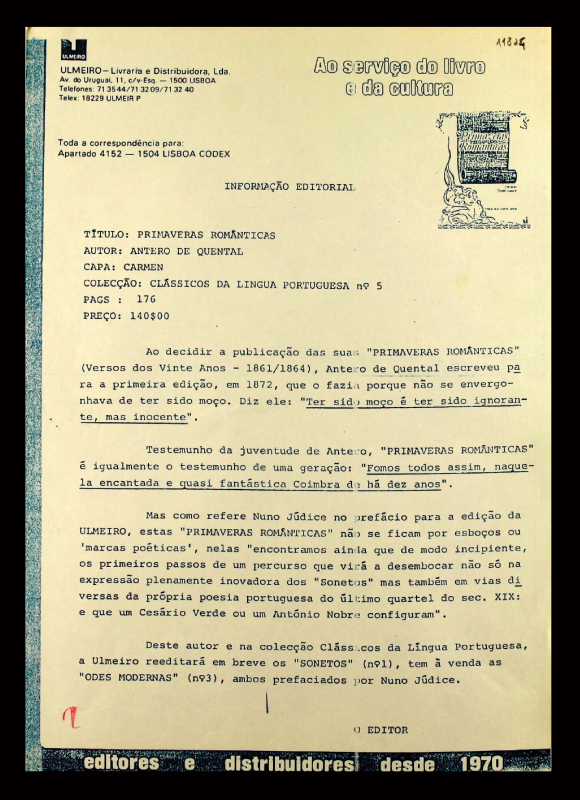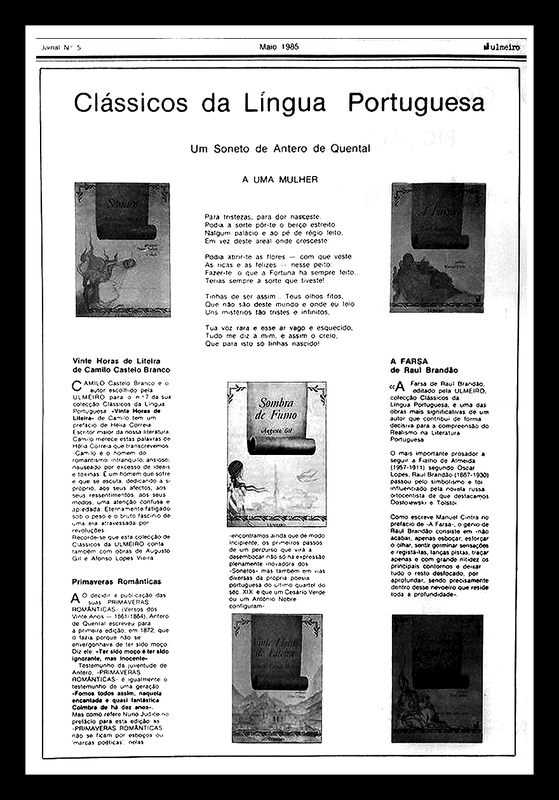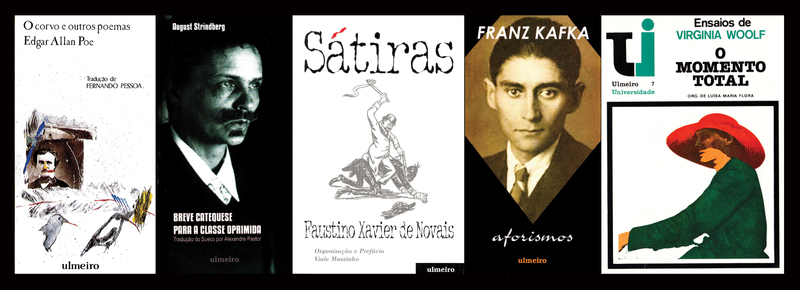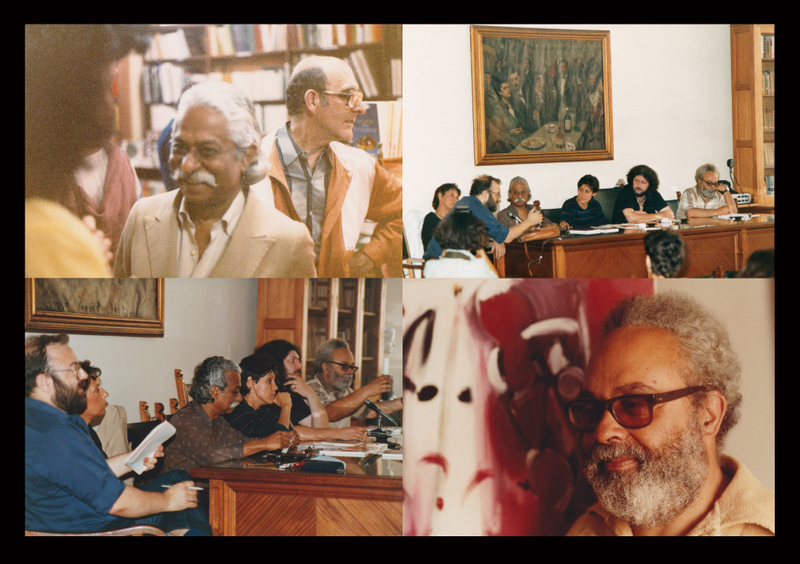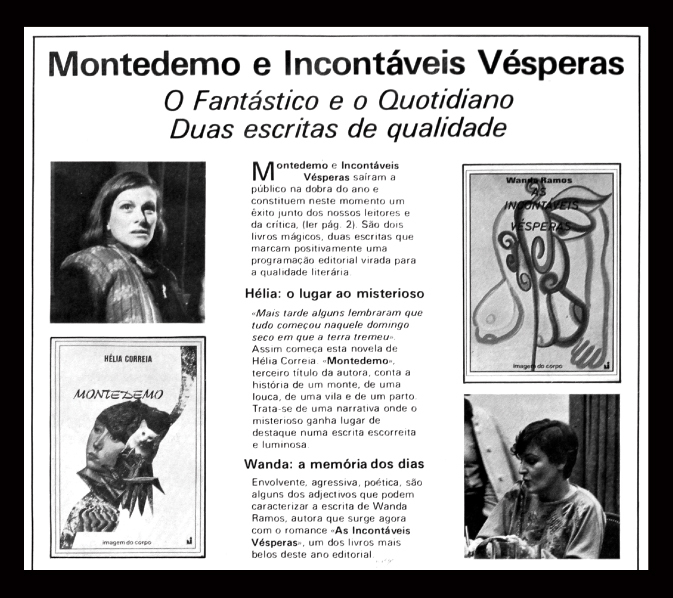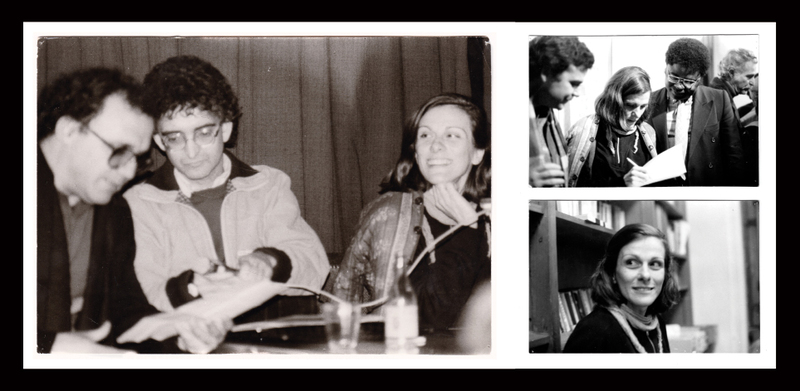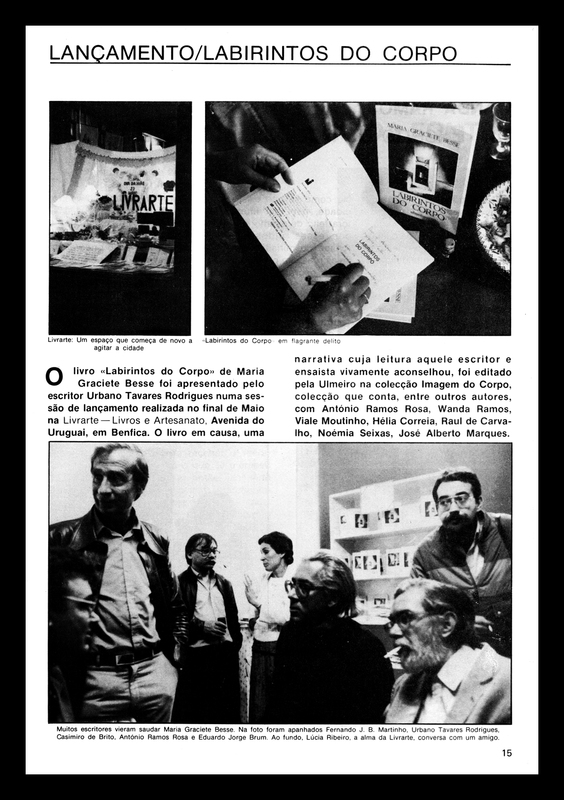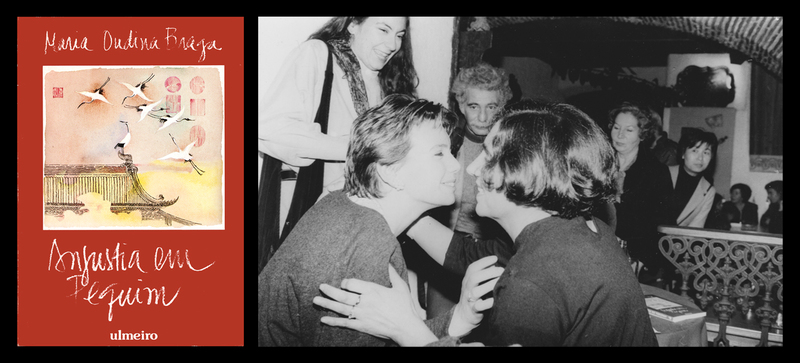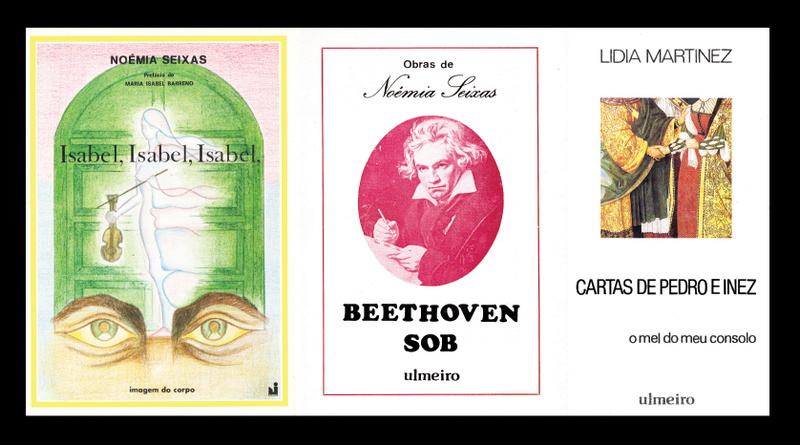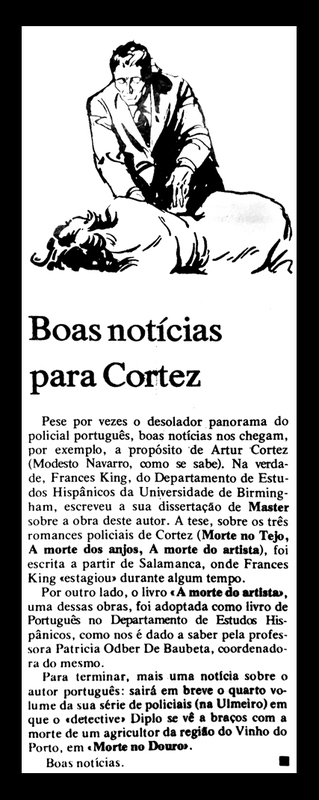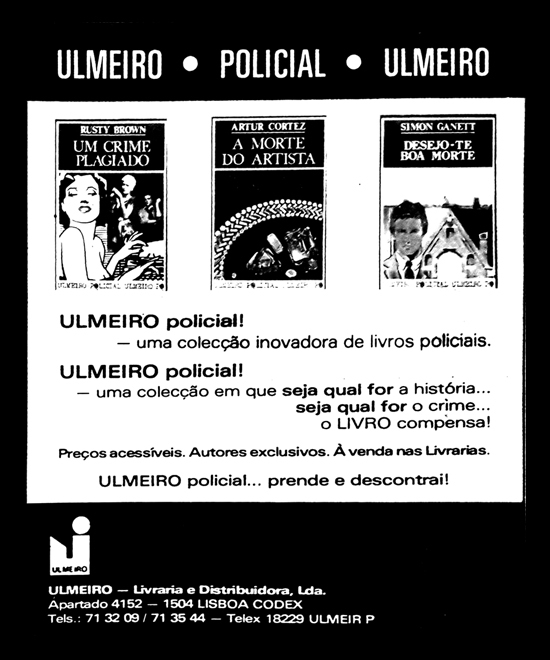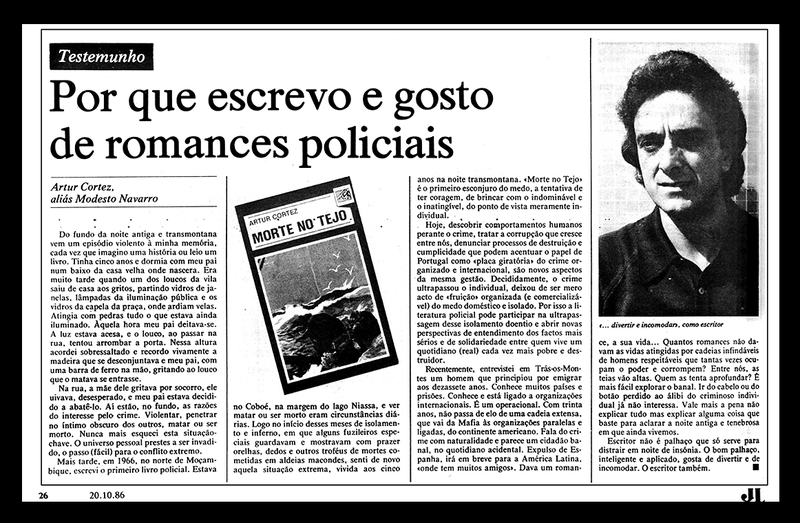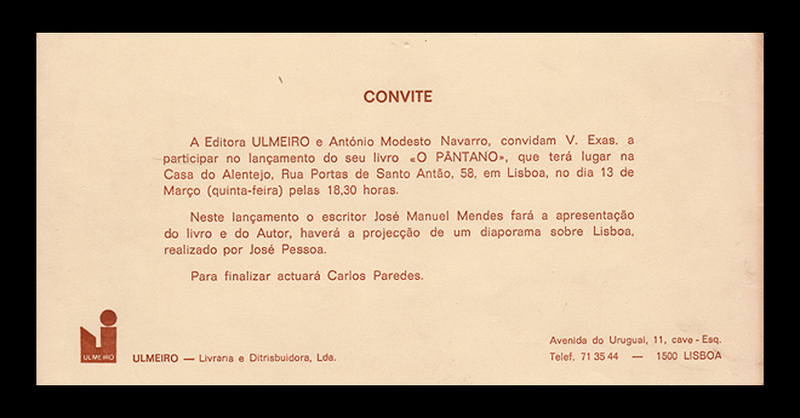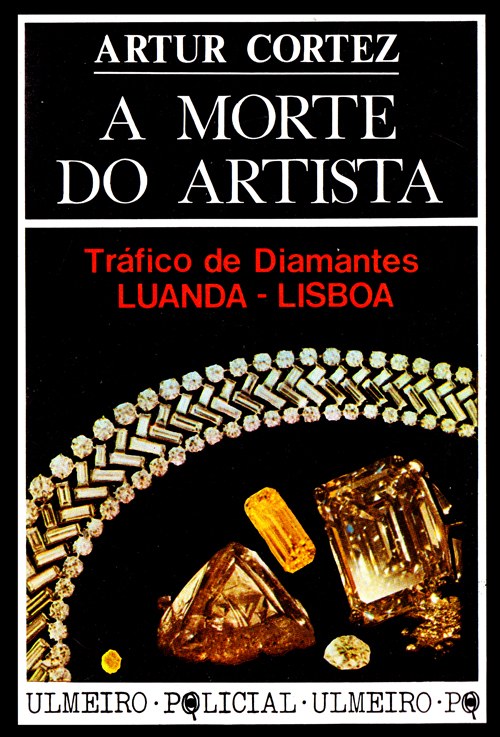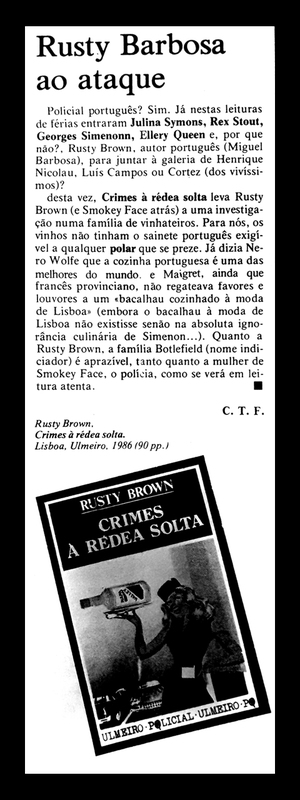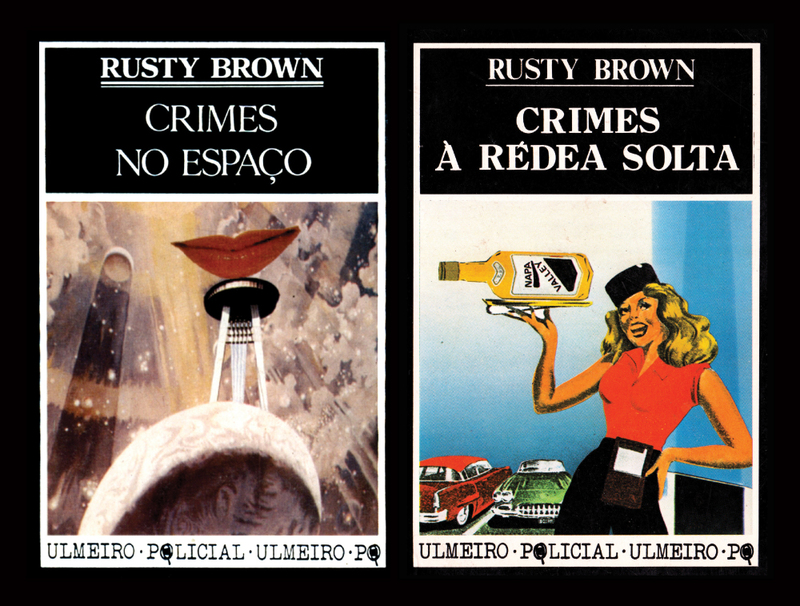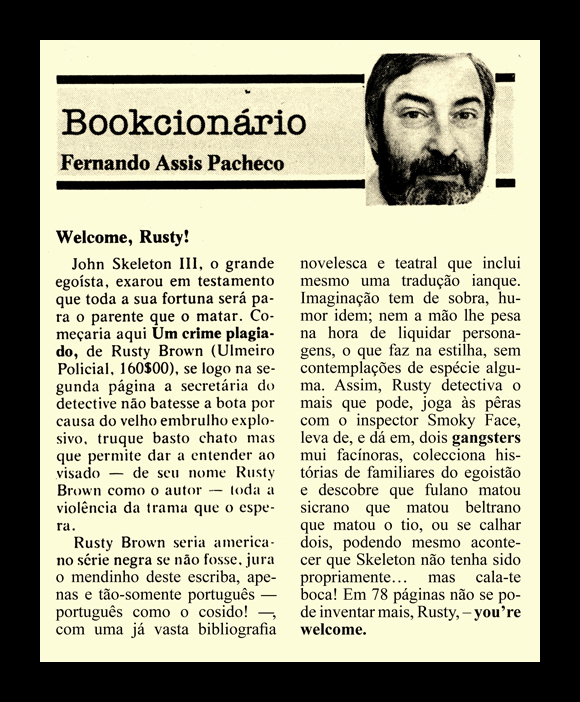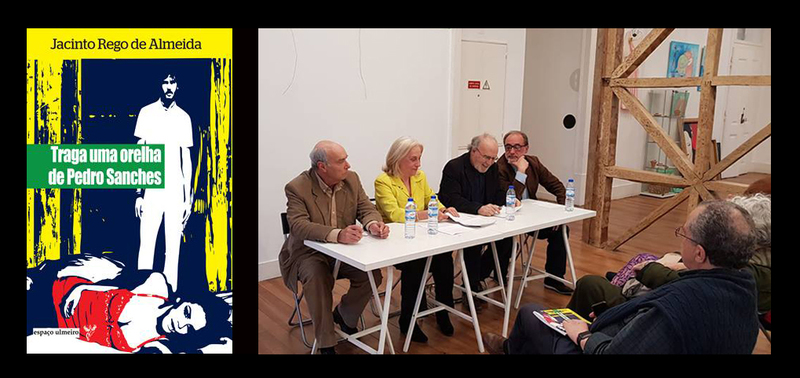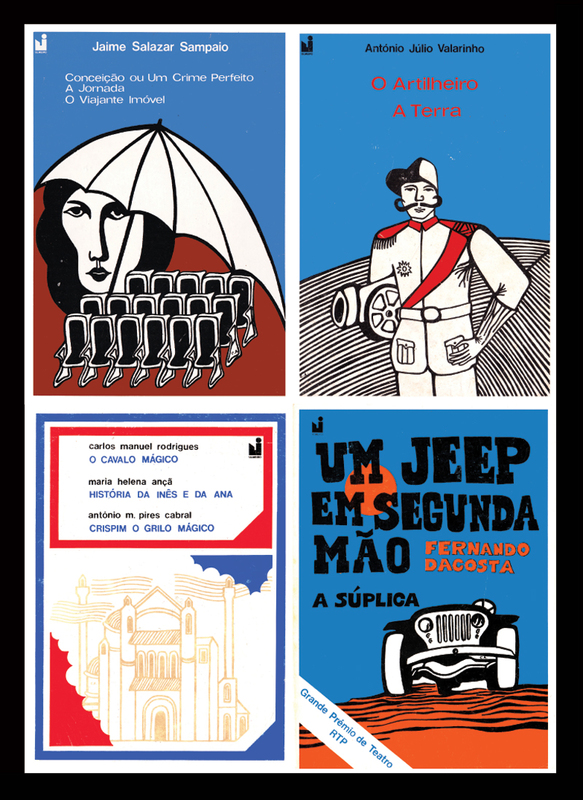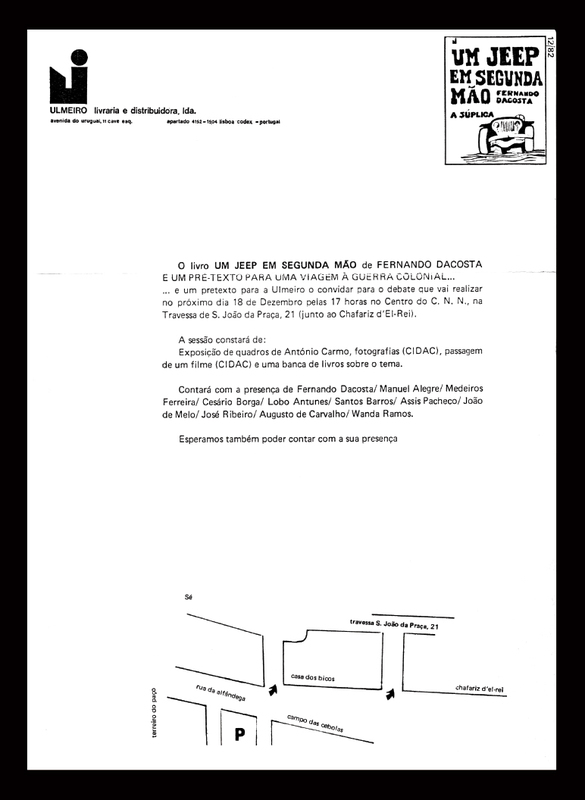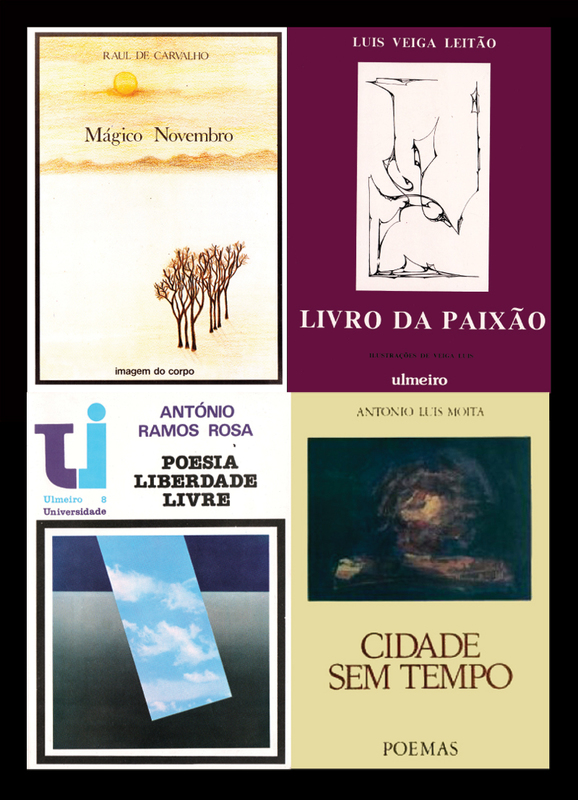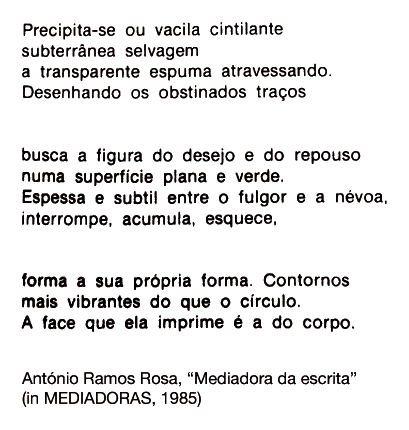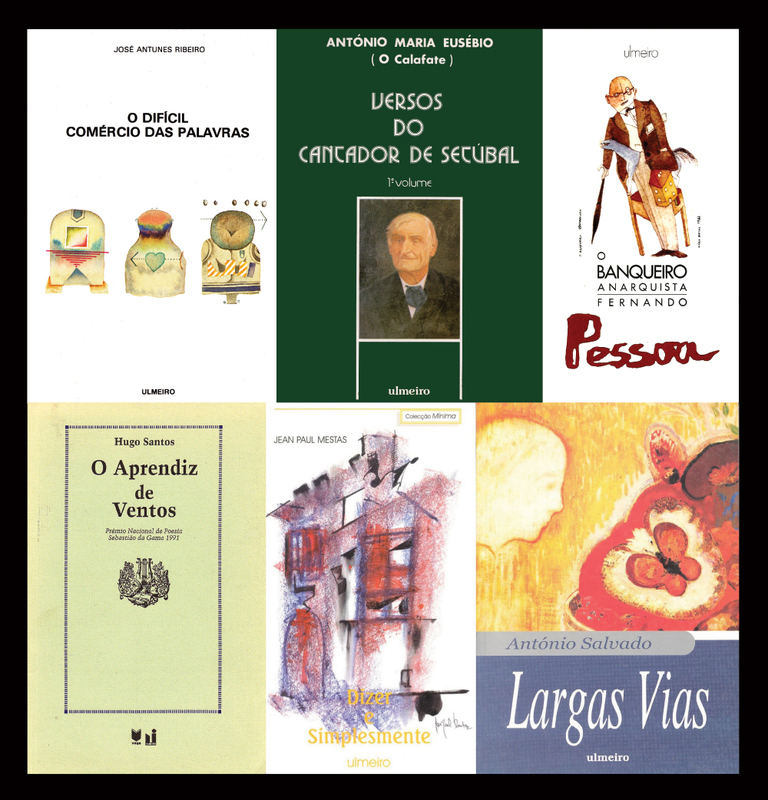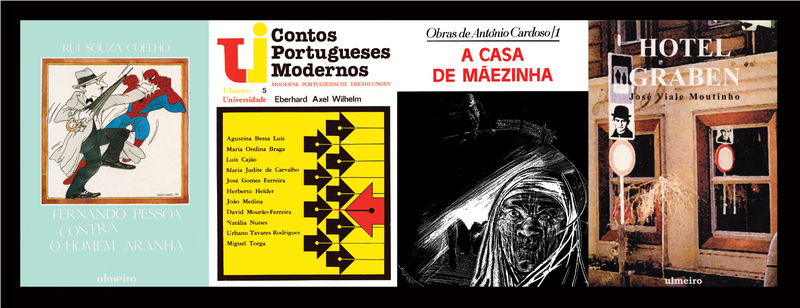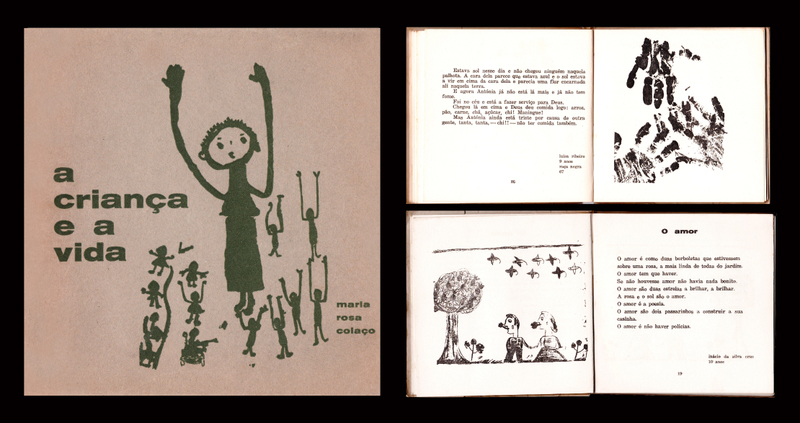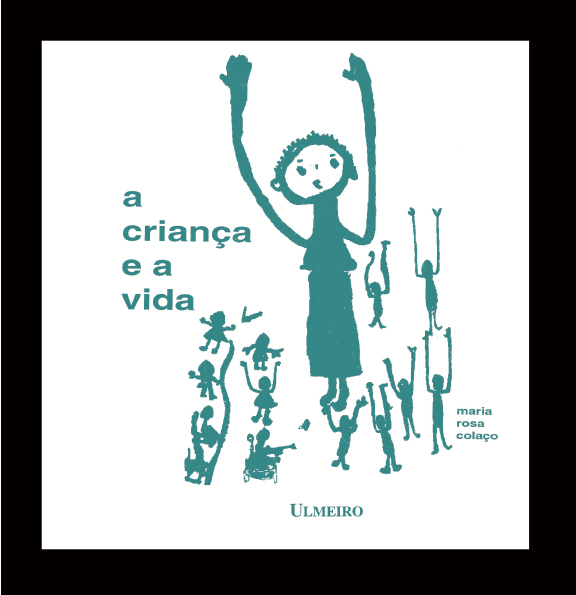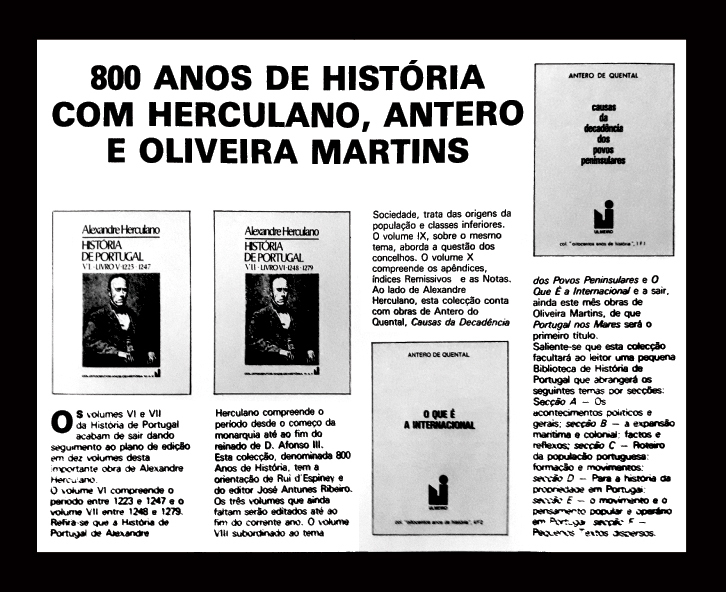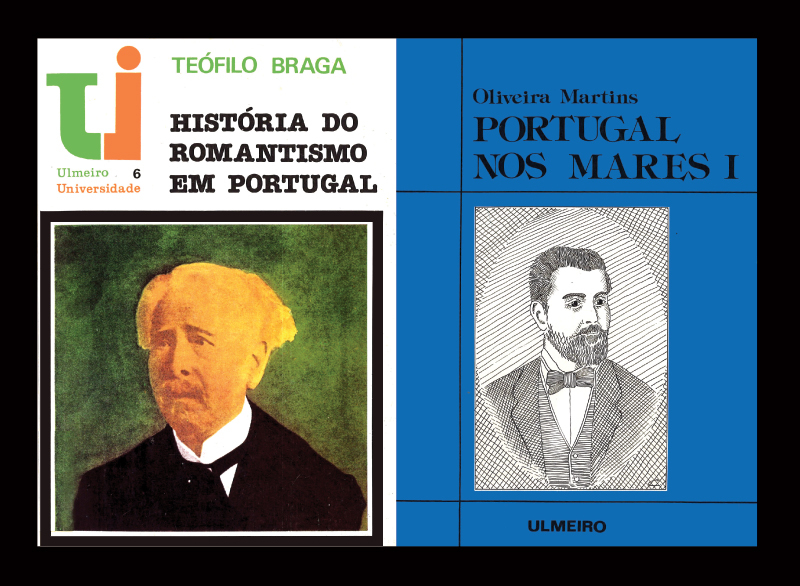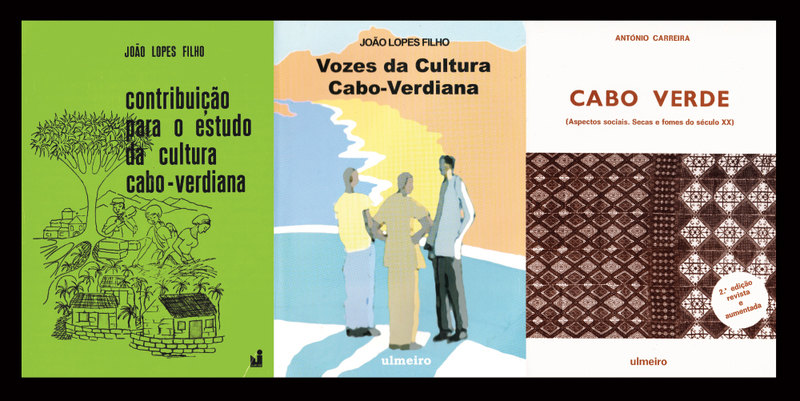7. Diversification and innovation
Ulmeiro was concerned with recovering forgotten classics of Camilo, Augusto Gil, António Nobre, Trindade Coelho, Raul Brandão, among others, as well as authors closer to it, such as Noémia Seixas, surrealist pioneer from whom it published a pioneering novel that explored the colonial War. For foreign authors, it is worth mentioning the re-editions of Voltaire, Hans Christian Andersen, Machado de Assis, Edgar Allan Poe, Kafka, Strindberg, Virginia Woolf, Henry Miller, Jiddu Krishnamurti, Alfonso Uribe Jaramillo and Beatriz Borovich.
It resumed the contemporary theatre, this time only the Portuguese, through the Barca Nova collection, with plays by António Júlio Valarinho (its organiser), Jaime Salazar Sampaio, Fernando Dacosta, António Macedo, Luís Figueiredo Tomé, Orlando da Costa and, for the petitioner, Carlos M. Rodrigues, Maria Helena Ançã and António M. Pires Cabral.
Greater innovation was the comeback to new Portuguese authors, such as Hélia Correia, Hugo Santos, José Viale Moutinho, Maria Ondina Braga, Mário Rui Cordeiro and the multi-faceted Miguel Barbosa, split between the theatre, short stories, novels, essay and detective novels by Rusty Brown (in this scope flanked by Artur Cortez/ António Modesto Navarro). It bet on Ascênsio de Freitas and on feminine poetry: Helena Malheiro, Isabel Sá, Lídia Martinez, Maria Graciette Besse, Noémia Seixas (pioneer surrealist poet from Portugal), Wanda Ramos, etc.
It recuperated poets from innovative literary currents, such as those from the Árvore [Tree] (António Ramos Rosa, Luís Moita, Raul de Carvalho) and the Notícias do Bloqueio [News from the Blockade] groups (Luís Veiga Leitão), from Angolan poetry (António Cardoso and David Mestre) and from visual/ experimental poetry. Of this current, it edited the reference anthology Poemografias [Poemgraphies] (1986), organised by Fernando Aguiar and Silvestre Pestana and including theoretical texts by Alberto Pimenta, Ana Hatherly, José-Alberto Marques, E. M. de Melo e Castro and Salette Tavares, among others. Through an associated seal (the Folio Exemplar), it also published a book by Hugo Beja (Alguns andamentos essenciais [Some essential steps], 2013), one of the main representatives of the disintegrationist poetic movement (“desintegracionismo”). It re-edited António Nobre and Fernando Pessoa and published the entire popular poetry of António Maria Eusébio (the Calafate [Caulker]). It honoured foreign poets like Rimbaud, Jean Paul Mestas, William Burroughs and Allen Ginsberg. It also launched new poetry by Álamo Oliveira, António Salvado, Luís Filipe Sarmento, Manuel Cintra and the editor himself.
It also divulged the short narrative, through works by António Cardoso and Rui Sousa Coelho and the anthology Contos portugueses modernos (Modern Portuguese Short Stories), with Agustina Bessa Luís, Herberto Helder, Almada Negreiros and Miguel Torga. And also, by the return to literature for children, with Italian but also Portuguese successes, such as the 40th ed. of A criança e a vida [The Child and the Life] by Maria Rosa Colaço, and the 2nd ed. of A história do hidroavião [The History of the Seaplane], by António Lobo Antunes.
It focused as well on Luso-African literature and essay and on the country's History, with reference works by Herculano, Antero, Oliveira Martins and Teófilo Braga.
This web publication had the support of CHAM (NOVA FCSH/UAc), through the strategic project sponsored by FCT (UIDB/04666/2020). This work is funded by national funds through the FCT – Fundação para a Ciência e a Tecnologia, I.P., under the Norma Transitória – DL 57/2016/CP1453/CT0062.
See next section: 8. Neighbourhood bookshops. The prescription-free antidepressant >>


